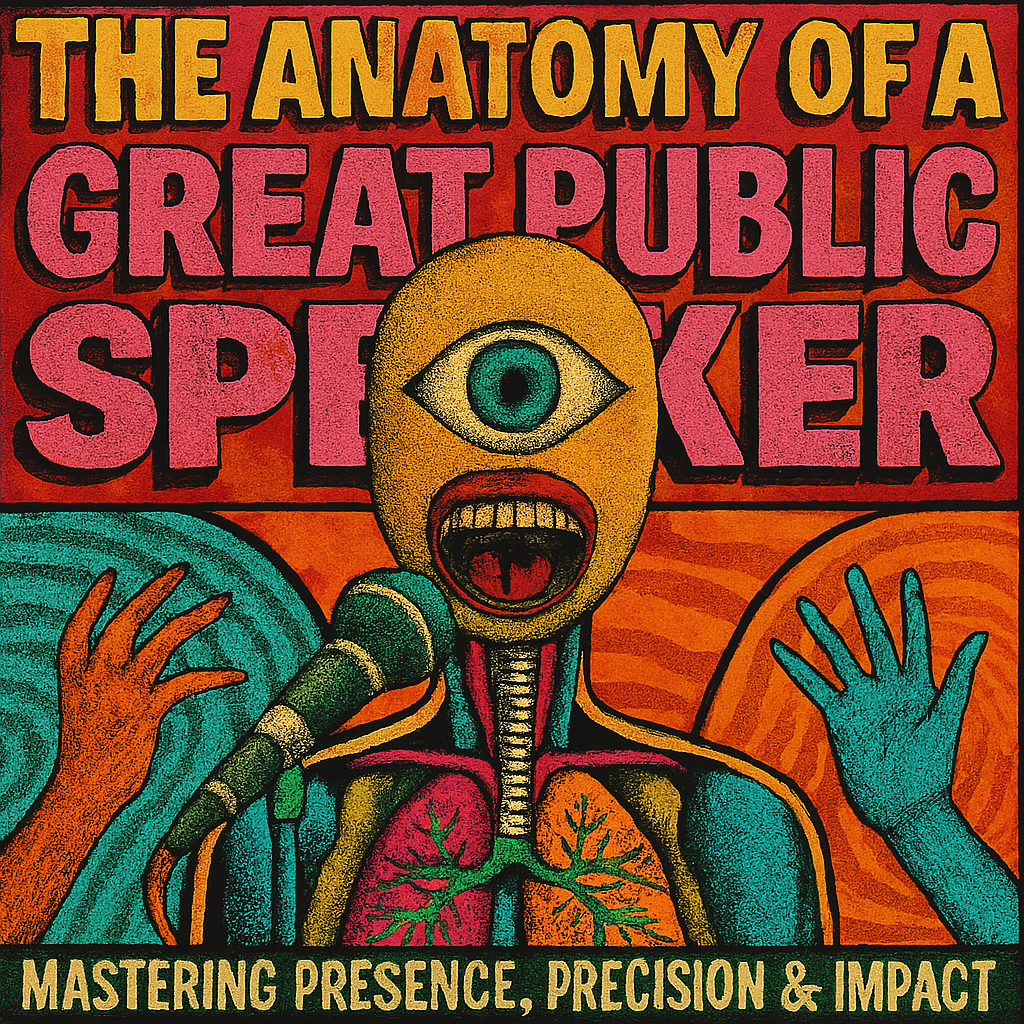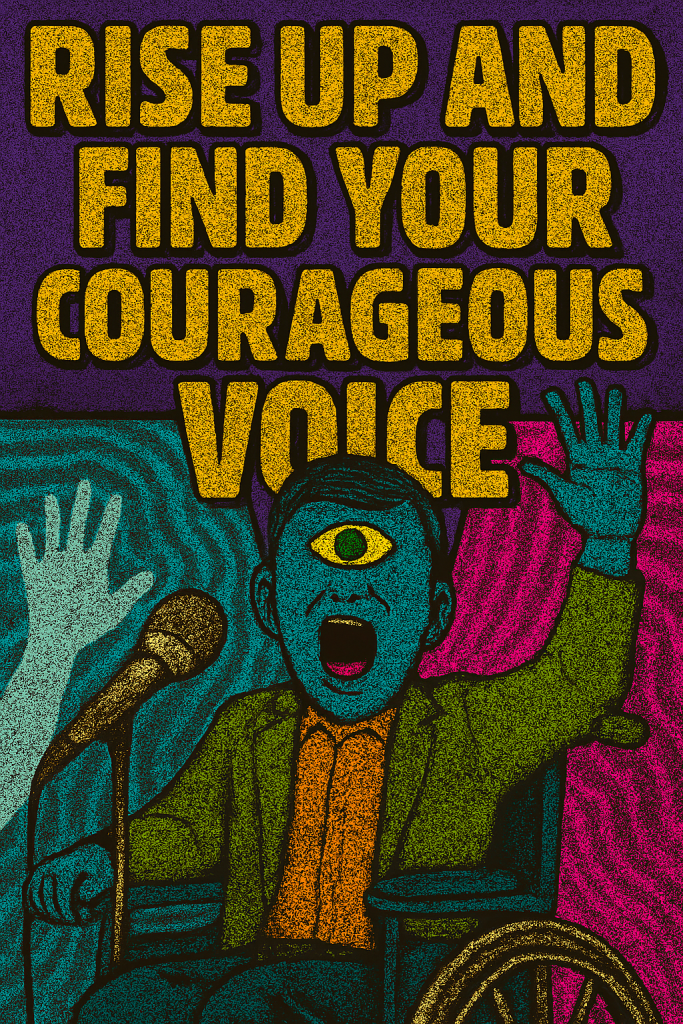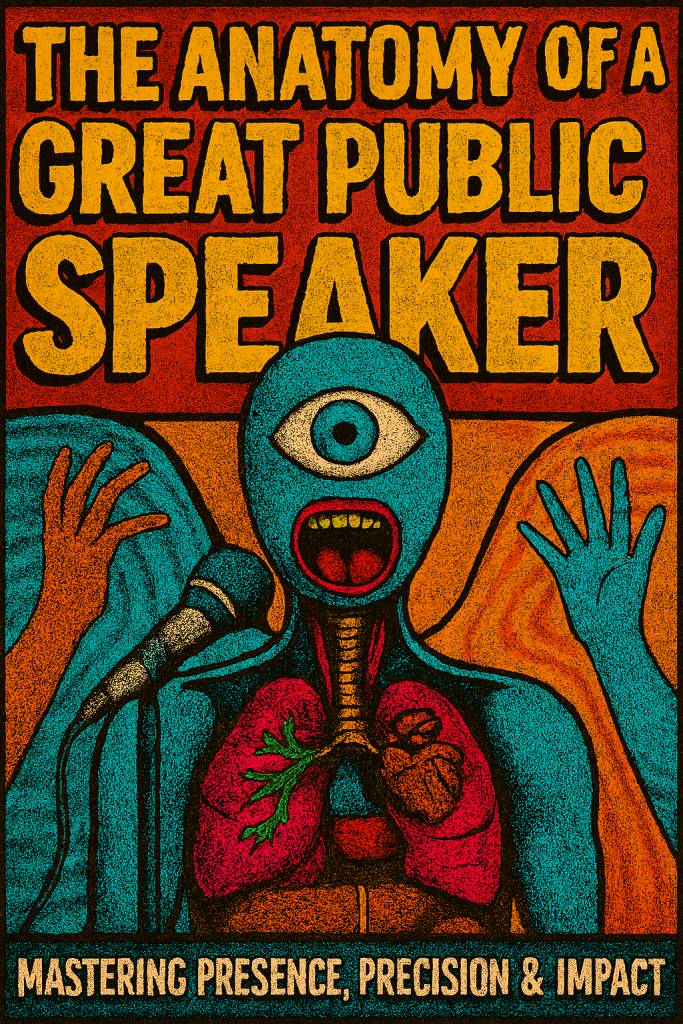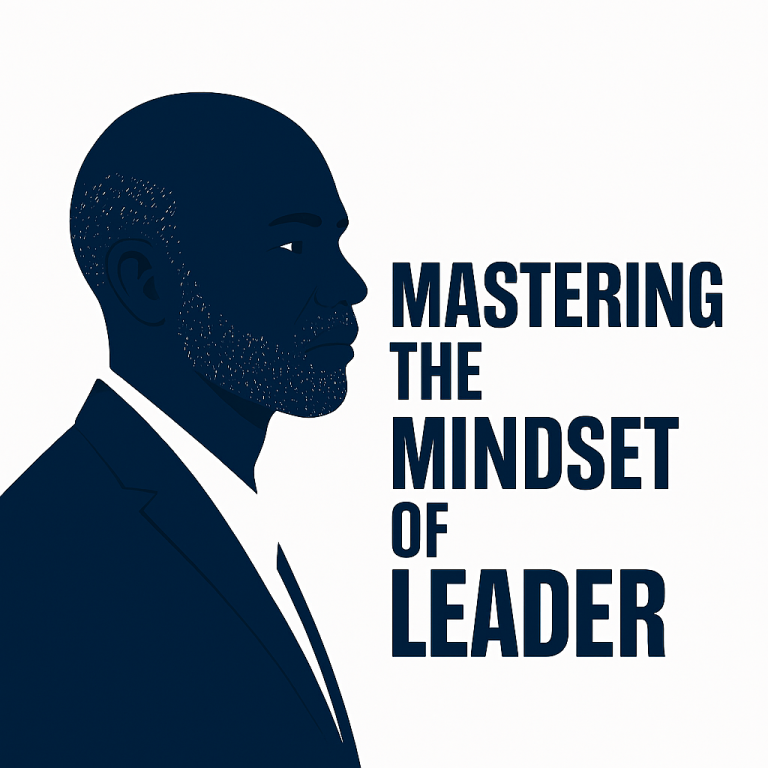
Great Public Speaker Mastering Presence And Body Language
Great Public Speaker – Mastering Presence, Precision and Impact
Public speaking remains one of the most influential forms of communication in both personal and professional spheres. It is not simply about delivering words – it is about shaping perception, building trust and inspiring action. A great public speaker is not defined by charisma alone – but by a constellation of skills grounded in psychology, physiology and communication science. From vocal modulation to cognitive framing – every element plays a role in how a message is received and remembered. Whether you’re preparing for a keynote or refining your everyday communication – these insights offer a blueprint for growth.
Vocal Control and Modulation
A speaker’s voice is their primary instrument – and mastering it requires conscious control. Studies show that varying pitch and pace increases listener engagement and retention. Monotone delivery leads to cognitive fatigue – while dynamic modulation sustains attention. Effective speakers use pauses strategically – allowing ideas to land and giving listeners time to process. Volume should be adapted to room size and emotional tone – not just personal comfort. Breath control supports vocal strength and reduces strain – especially during long presentations. Resonance and clarity are enhanced by diaphragmatic breathing – not shallow chest breathing. Articulation matters – slurred or rushed speech undermines credibility. Vocal warm-ups before speaking reduce tension and improve performance. A well-modulated voice signals confidence and emotional intelligence.

Voacl Control And Modulation With Body Language
Body Language and Nonverbal Cues
Nonverbal communication accounts for over half of perceived speaker credibility. Open posture – with shoulders relaxed and chest lifted – signals confidence and approachability. Eye contact builds trust and connection – especially when distributed evenly across the audience. Gestures should be purposeful – not distracting or repetitive. Facial expressions must align with verbal content – incongruence creates confusion. Movement across the stage should be intentional – not aimless pacing. Proximity to the audience can increase intimacy – but must respect personal space. Mirroring audience energy helps build rapport – while rigidity can create emotional distance. Hand placement matters – avoid hiding hands or crossing arms excessively. Nonverbal cues should reinforce – not contradict – spoken words. Mastery of body language enhances clarity and emotional resonance.
Clarity of Message
A great speaker delivers a message that is both clear and memorable. Clarity begins with structure – a well-organized speech helps listeners follow and retain key points. Simplicity in language increases accessibility – jargon and complexity alienate audiences. Repetition of core ideas reinforces retention – but must be varied to avoid redundancy. Transitions between sections should be smooth – guiding the audience through the narrative. Analogies and metaphors aid understanding – especially for abstract concepts.
Visual language paints mental pictures – enhancing engagement. Avoid filler words – they dilute impact and signal uncertainty. Precision in word choice reflects thoughtfulness – vague language undermines authority. A clear message is actionable – it leaves the audience knowing what to think, feel or do. Clarity is not just about information – it’s about transformation.
Audience Awareness
Effective speakers tailor their message to the needs and expectations of their audience. Understanding demographics – age, profession, cultural background – informs tone and content. Emotional intelligence allows speakers to read the room – adjusting delivery in real time. Cultural sensitivity ensures inclusivity – avoiding assumptions or alienating language. Feedback cues – nods, expressions, posture – guide pacing and emphasis. Audience engagement increases when speakers reference shared experiences or values. Humor must be context-appropriate – what works in one setting may fail in another. Questions and interaction foster connection – making the audience feel seen and heard. Speakers should anticipate objections or confusion – and address them proactively. Empathy builds trust – audiences respond to speakers who care. Audience awareness transforms a speech from performance to dialogue.

Confidence and Authenticity
Confidence is not arrogance – it is the calm assurance that one’s message matters. Authenticity means speaking from a place of truth – not performance. Audiences are highly attuned to sincerity – they can detect when a speaker is faking it. Confidence grows from preparation – knowing your material reduces anxiety. Authentic speakers share personal stories – not to impress, but to connect. Vulnerability can be powerful – when used with intention and boundaries. Eye contact and open gestures reinforce authenticity – while scripted delivery can feel robotic. Self-awareness helps speakers manage nerves – without suppressing emotion. Authenticity builds credibility – people trust speakers who are real. Confidence and authenticity together create magnetic presence.
Preparation and Practice
Behind every great speech is hours of preparation. Research ensures accuracy – and builds speaker authority. Outlining helps organize thoughts – preventing rambling or tangents. Rehearsal improves timing, pacing and delivery – especially under pressure. Practicing aloud reveals awkward phrasing – and strengthens vocal control. Continual reviewing of any speeches and repitition helps identify areas for improvement. Memorization should focus on structure – not word-for-word recall. Preparing for technical issues – microphones, slides, lighting – reduces stress. Practicing with a live audience builds resilience – and reveals blind spots. Preparation includes mental rehearsal – visualizing success improves performance. Practice doesn’t make perfect – it makes confident.
Storytelling and Narrative Structure
Humans are wired for stories – they help us make sense of information and emotion. A compelling narrative has a clear arc – beginning, middle and end. Conflict and resolution create tension – keeping audiences engaged. Personal stories build emotional connection – especially when they reflect universal themes. Details matter – vivid imagery makes stories memorable. Timing is key – stories should support, not overshadow, the message. Humor and surprise increase impact – but must serve the narrative. Stories should be authentic – fabricated anecdotes erode trust. Linking stories to key points reinforces learning. A strong narrative creates emotional resonance – making the message stick. Storytelling transforms data into meaning.
Emotional Intelligence and Empathy
Emotional intelligence is the ability to understand and manage emotions – both one’s own and others’. Empathy allows speakers to connect deeply – recognizing audience needs and feelings. Self-regulation helps manage nerves – and maintain composure under pressure. Social awareness guides tone and content – ensuring relevance and respect. Expressing emotion appropriately enhances authenticity – but must be balanced. Empathetic speakers listen actively – even when not speaking. Emotional intelligence improves conflict resolution – and audience engagement. Recognizing emotional cues helps adjust delivery – increasing impact. Empathy builds trust – audiences respond to speakers who care. Emotional intelligence is not soft – it is strategic.

Use of Silence and Pausing
Silence is a powerful tool – it creates space for reflection and emphasis. Strategic pauses allow ideas to land – and give listeners time to process. Silence can signal confidence – rushing suggests insecurity. Pausing before key points builds anticipation – increasing impact. After a joke or story – silence lets the moment breathe. Silence can de-escalate tension – especially in emotionally charged topics. Speakers should avoid filler sounds – like “um” or “uh” – which clutter delivery. Pausing helps regulate pace – preventing overwhelm. Silence invites audience participation – creating a sense of dialogue. Mastering silence is mastering rhythm.
Visual Aids and Supporting Materials
Visuals should enhance – not distract from – the spoken message. Slides must be clear, minimal and relevant – clutter reduces comprehension. Charts and graphs should be explained – not assumed to be self-evident. Images evoke emotion – and can reinforce key themes. Fonts and colors affect readability – and emotional tone. Consistency in design builds professionalism – and trust. Visuals should be timed with speech – not left static. Handouts or props can add tactile engagement – when used sparingly. Technology should support – not dominate – the presentation. Visual aids are tools – not crutches. Effective visuals amplify clarity.
Handling Questions and Interaction
Audience questions are opportunities – not threats. Listening fully before responding shows respect – and prevents misinterpretation. Clarifying questions ensures understanding – before answering. Responses should be concise, accurate and respectful – even under challenge. Admitting uncertainty builds credibility – when done with transparency. Redirecting off-topic questions maintains focus – without dismissing the asker. Encouraging questions fosters engagement – and learning. Managing hostile questions requires calm and control – not defensiveness. Interaction builds rapport – making the audience feel involved. Questions reveal audience needs – guiding future improvement. Handling interaction well reflects mastery.

Managing Anxiety and Stage Fright
Stage fright is common – even among experienced speakers. Understanding its physiological basis helps manage symptoms – adrenaline affects heart rate and breath. Preparation reduces uncertainty – a major source of anxiety. Breathing techniques calm the nervous system – improving focus. Visualization of success builds confidence – and reduces fear. Reframing nerves as excitement shifts mindset – improving performance. Physical movement releases tension – and grounds the speaker. Supportive self-talk counters negative thoughts – boosting resilience. Familiarity with the venue reduces stress – and increases comfort. Accepting imperfection reduces pressure – and enhances authenticity. Anxiety is manageable – not inevitable.
Cultural and Contextual Sensitivity
Effective speakers respect cultural norms – and adapt accordingly. Language should be inclusive – avoiding stereotypes or assumptions. Humor must be context-aware – what’s funny in one culture may offend in another. Dress and demeanor should align with audience expectations – without compromising authenticity. References should be accessible – not culturally exclusive. Sensitivity builds trust – and avoids alienation. Understanding historical and social context informs tone – and content. Listening to feedback helps refine approach – and deepen connection. Cultural awareness is not an optional exchange but it is essential. Sensitivity reflects emotional intelligence – and ethical communication.
Feedback and Continuous Improvement
Great speakers seek feedback – and use it to grow. Constructive criticism reveals blind spots – and opportunities. Recording and reviewing performances builds self-awareness. Peer review offers diverse perspectives – enhancing insight. Audience surveys provide data – on impact and clarity. Reflecting after each speech identifies patterns – and areas for refinement. Feedback should be specific – vague praise offers little direction. Accepting critique with openness accelerates learning – defensiveness stalls progress. Improvement is iterative – each performance builds on the last. Continuous refinement is the hallmark of mastery – not perfection.
Adaptability and Improvisation
Even the best-prepared speakers face unexpected moments – adaptability is key. Technical glitches, audience reactions or time constraints require quick thinking. Improvisation is not winging it – it’s grounded spontaneity. Knowing your core message allows flexibility – without losing coherence. Responding to audience energy keeps delivery fresh – and relevant. Humor can defuse tension – when used with care. Adapting examples or stories to the moment increases resonance. Improvisation builds trust – showing the speaker is present and responsive. Practicing scenarios improves readiness – and reduces panic. Adaptability is a skill – not a gamble.

Ethical Communication and Integrity
Public speaking carries responsibility – words shape perception and action. Ethical speakers prioritize truth – avoiding manipulation or distortion. Citing sources accurately builds credibility – and respect. Transparency about intent fosters trust – especially in persuasive contexts. Avoiding fear-based tactics preserves integrity – and audience autonomy. Respecting differing viewpoints encourages dialogue – not division. Ethical communication includes consent – especially when sharing stories involving others. Integrity means consistency – between message and behavior. Ethical speakers elevate discourse – not just themselves. Integrity is not optional – it’s foundational.
Conclusion
The art of public speaking is both timeless and evolving. It demands a fusion of technical skill, emotional intelligence and ethical clarity. Great speakers are not defined by volume or theatrics – but by their ability to connect, inform and inspire. Every element – from vocal tone to narrative structure – contributes to the impact of a message. Mastery is not a destination – but a commitment to continuous growth. Whether you’re speaking to ten people or ten thousand – the principles remain the same. Speak with clarity, listen with empathy and lead with integrity. The stage is yours – and so is the responsibility.
Join the Discussion
What traits do you value most in a public speaker – and which ones are you working to develop?
#PublicSpeakingMastery #VocalPresence #AuthenticCommunication #SpeakerSkills #EmotionalIntelligence #NarrativeImpact #StageConfidence #EthicalSpeaking #AudienceConnection #ClarityMatters #BodyLanguageWisdom #ImprovisationPower #FeedbackDriven #CulturalSensitivity #ContinuousGrowth #SpeakToInspire




3 thoughts on “Great Public Speaker Mastering Presence And Body Language”